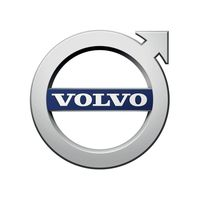Polestar's Struggles Amid EV Market Turbulence
August 29, 2024, 4:42 pm

Location: United States, Texas, Austin
Employees: 10001+
Founded date: 2003
Total raised: $3.86B
Polestar, the Swedish electric vehicle (EV) manufacturer, is navigating stormy waters. The company recently reported a significant operating loss for the second quarter of 2024, a stark reminder of the challenges facing many EV startups. The luxury car maker's struggles stem from a combination of factors: a slowdown in demand, delays in new model launches, and rising costs.
In a bold move, Polestar replaced its long-time CEO, Thomas Ingenlath, with Michael Lohscheller, a seasoned executive with experience in the automotive industry. This leadership change comes at a critical juncture as the company grapples with funding issues and disappointing sales figures. The new CEO faces a daunting task: steering Polestar back to profitability in a fiercely competitive market.
Polestar's second-quarter operating loss narrowed slightly to $242.3 million, down from $273.6 million a year earlier. However, the company's gross margin dipped into negative territory, swinging to -0.7% from a slight positive of 0.1% in the same period last year. Revenue also took a hit, falling to $574.9 million from $693.3 million. The company is caught in a price war ignited by Tesla, which has forced many EV manufacturers to offer higher discounts to attract buyers.
Despite having strong financial backers like Volvo Cars and China's Geely, Polestar has faced setbacks. Earlier this year, Volvo announced it would halt further funding, leaving Polestar to rely more heavily on Geely's support. In August, Polestar secured an additional $300 million through a one-year term loan facility, a lifeline in a challenging financial landscape. However, cash reserves dwindled, dropping from $784 million at the end of March to $669 million by June.
The company is also feeling the pinch from punitive import tariffs imposed by the European Union, the United States, and Canada on Chinese-made EVs. These tariffs have compounded the challenges for Polestar, which until recently manufactured all its vehicles in China. In a bid to adapt, Polestar began production of its Polestar 3 SUV in the United States, a strategic move aimed at mitigating the impact of tariffs and improving its market position.
As Polestar struggles, Tesla is also facing its own challenges. The electric vehicle giant recently approached the Canadian government, seeking a reduction in tariffs on its China-made vehicles. Canada announced a 100% duty on all Chinese-made EVs, a move that mirrors similar actions taken by the U.S. This tariff environment creates a complex landscape for both Tesla and Polestar, as they navigate the shifting sands of international trade and regulatory policies.
Tesla's request for a lower tariff rate highlights the competitive pressures in the EV market. The company is attempting to secure a more favorable tariff structure, similar to what it received in the European Union. The EU's recent decision to impose a 9% tariff on Tesla's Chinese-made vehicles, compared to a staggering 36.3% on other imports, illustrates the nuanced approach to tariffs based on direct subsidies and market conditions.
The Canadian market has seen a dramatic increase in imports of Chinese-made vehicles, with a staggering 460% year-over-year rise in 2023. This surge is largely attributed to Tesla's shipments from Shanghai. However, the new tariffs could stifle this growth, forcing companies to reevaluate their strategies.
Polestar, too, is assessing the impact of these tariffs. The company imports its Polestar 2 from China to Canada, and the increased duties could significantly affect its sales. The automotive landscape is shifting rapidly, and both Polestar and Tesla must adapt to survive.
In this turbulent environment, the future of Polestar hangs in the balance. The company is banking on a stronger second half of the year, but achieving this goal will require overcoming significant hurdles. The leadership change may bring fresh perspectives, but the underlying challenges remain.
As the EV market evolves, Polestar must find its footing. The road ahead is fraught with obstacles, but with strategic decisions and a focus on innovation, there is a glimmer of hope. The company must navigate the storm, adapt to changing market dynamics, and ultimately deliver on its promise of sustainable luxury vehicles.
In conclusion, Polestar's journey is a microcosm of the broader challenges facing the EV industry. As demand fluctuates and regulatory pressures mount, companies must remain agile. The landscape is competitive, and only those who can adapt will thrive. Polestar's next moves will be critical in determining its fate in this rapidly changing market. The stakes are high, and the clock is ticking.
In a bold move, Polestar replaced its long-time CEO, Thomas Ingenlath, with Michael Lohscheller, a seasoned executive with experience in the automotive industry. This leadership change comes at a critical juncture as the company grapples with funding issues and disappointing sales figures. The new CEO faces a daunting task: steering Polestar back to profitability in a fiercely competitive market.
Polestar's second-quarter operating loss narrowed slightly to $242.3 million, down from $273.6 million a year earlier. However, the company's gross margin dipped into negative territory, swinging to -0.7% from a slight positive of 0.1% in the same period last year. Revenue also took a hit, falling to $574.9 million from $693.3 million. The company is caught in a price war ignited by Tesla, which has forced many EV manufacturers to offer higher discounts to attract buyers.
Despite having strong financial backers like Volvo Cars and China's Geely, Polestar has faced setbacks. Earlier this year, Volvo announced it would halt further funding, leaving Polestar to rely more heavily on Geely's support. In August, Polestar secured an additional $300 million through a one-year term loan facility, a lifeline in a challenging financial landscape. However, cash reserves dwindled, dropping from $784 million at the end of March to $669 million by June.
The company is also feeling the pinch from punitive import tariffs imposed by the European Union, the United States, and Canada on Chinese-made EVs. These tariffs have compounded the challenges for Polestar, which until recently manufactured all its vehicles in China. In a bid to adapt, Polestar began production of its Polestar 3 SUV in the United States, a strategic move aimed at mitigating the impact of tariffs and improving its market position.
As Polestar struggles, Tesla is also facing its own challenges. The electric vehicle giant recently approached the Canadian government, seeking a reduction in tariffs on its China-made vehicles. Canada announced a 100% duty on all Chinese-made EVs, a move that mirrors similar actions taken by the U.S. This tariff environment creates a complex landscape for both Tesla and Polestar, as they navigate the shifting sands of international trade and regulatory policies.
Tesla's request for a lower tariff rate highlights the competitive pressures in the EV market. The company is attempting to secure a more favorable tariff structure, similar to what it received in the European Union. The EU's recent decision to impose a 9% tariff on Tesla's Chinese-made vehicles, compared to a staggering 36.3% on other imports, illustrates the nuanced approach to tariffs based on direct subsidies and market conditions.
The Canadian market has seen a dramatic increase in imports of Chinese-made vehicles, with a staggering 460% year-over-year rise in 2023. This surge is largely attributed to Tesla's shipments from Shanghai. However, the new tariffs could stifle this growth, forcing companies to reevaluate their strategies.
Polestar, too, is assessing the impact of these tariffs. The company imports its Polestar 2 from China to Canada, and the increased duties could significantly affect its sales. The automotive landscape is shifting rapidly, and both Polestar and Tesla must adapt to survive.
In this turbulent environment, the future of Polestar hangs in the balance. The company is banking on a stronger second half of the year, but achieving this goal will require overcoming significant hurdles. The leadership change may bring fresh perspectives, but the underlying challenges remain.
As the EV market evolves, Polestar must find its footing. The road ahead is fraught with obstacles, but with strategic decisions and a focus on innovation, there is a glimmer of hope. The company must navigate the storm, adapt to changing market dynamics, and ultimately deliver on its promise of sustainable luxury vehicles.
In conclusion, Polestar's journey is a microcosm of the broader challenges facing the EV industry. As demand fluctuates and regulatory pressures mount, companies must remain agile. The landscape is competitive, and only those who can adapt will thrive. Polestar's next moves will be critical in determining its fate in this rapidly changing market. The stakes are high, and the clock is ticking.


